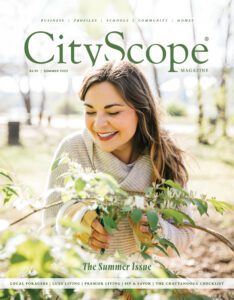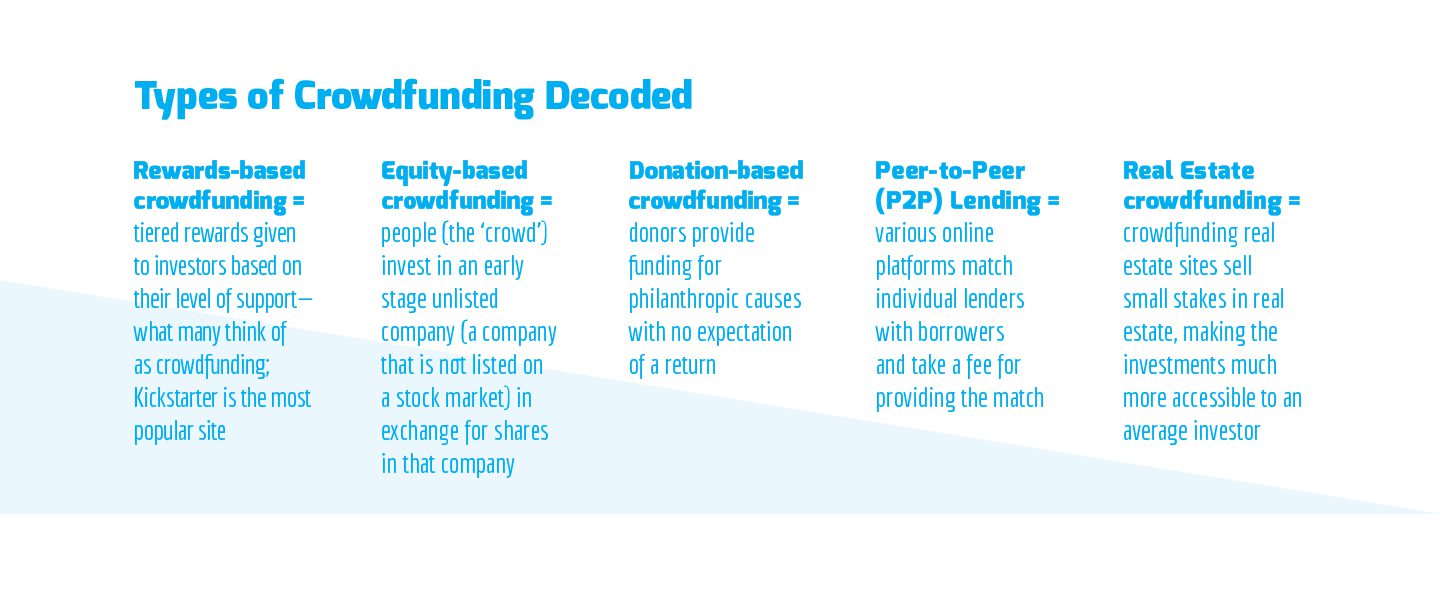How does it work?
Typically the funding platform is hosted on a website which acts as the middleman between fundraiser and funder. These web-based crowdfunding platforms make it easier to get an idea in front of thousands of potential supporters, and allow funders to easily and securely make pledges. Many crowdfunding platforms are rewards-based, meaning that the fundraiser can offer tiered rewards to investors based on their level of support. OddStory Brewing Co., a local brewery that hosted a successful Kickstarter campaign in Fall 2016, offered rewards ranging from a branded t-shirt for those who pledged $25 or more to private beer tastings and brewing classes for those who pledged in the thousands.
Additionally, these crowdfunding platforms have rules and regulations to keep projects legitimate, focused, and legal. Kickstarter, for example, prohibits projects from offering equity or fundraising for charity, forbids fundraising for politics or illegal contraband, and requires prototype demonstrations for complex manufactured projects. Indiegogo, another major crowdfunding platform, allows fundraising for charity and offers a platform for equity offerings. Kickstarter has a policy that projects must meet or exceed their funding goal, or they receive nothing, and all supporters’ credit cards are not charged for their pledges. On the other hand, Indiegogo allows fundraisers to choose either “all-or-nothing” or more flexible options allowing them to keep whatever amount is raised.
Statistics and Market Impact
In 2015, nearly $2 billion was raised in the United States alone through equity, donation, real estate, and reward-based crowdfunding. Since its beginnings in 2009, reward-based crowdfunding platform Kickstarter, has raised $2.72 billion for 126,000 successful projects. While the vast majority of these crowdfunding campaigns raised less than $10,000, a growing number of campaigns are raising hundreds of thousands or even millions of dollars for exciting projects that go viral.
Back in 2012, the Pebble Smartwatch Kickstarter campaign, aiming for a goal of $100,000, managed to raise $10,266,845 from 68,929 backers. “Star Citizen,” an ambitious, space trading and combat video game, raised over $2 million from 34,000 backers in its own Kickstarter campaign. Still unfinished, the video game has continued to crowdfund its development on it’s own site, with a massive $141 million raised via crowdfunding, as of this past January.
Also in 2012, the developers of virtual reality (VR) headset Oculus Rift raised $2.4 million from over 9,500 backers in a massively successful Kickstarter campaign. Previously, virtual reality had been largely considered a failed ‘90s fad due in large part to unattainable technology, but the new successful Oculus Riff VR system made waves. Oculus was subsequently bought by Facebook for $2 billion, and since then major companies like Samsung, Sony, and Microsoft have been scrambling to develop their own products. Without crowdfunding, an entire multi-billion dollar market may have been unrealized.
Bigger than the Benjamins:
PR, Market Validation, and Learning from Failure
While the most obvious impetus for crowdfunding is money, the methods and mediums of crowdfunding have some ancillary benefits which, for many entrepreneurs, often end up being more beneficial than the actual funds.
“Crowdfunding has several advantages, foremost of which is its flexibility: unlike other types of investment that focus on a specific asset class, crowdfunding can be used to fund a variety of ventures,” says Dr. Phil Roundy, UC Foundation Assistant Professor of Entrepreneurship at UTC. “Other advantages are that it is relatively low risk for the entrepreneur, and it provides a mechanism for entrepreneurs to get feedback from a large pool of potential customers.”
“Crowdfunding is not just about the money; it is primarily a market builder,” says local Treehouse Project co-founder Enoch Elwell. “The important thing is that you’re building up a fan base, a market, and you’re learning from that market. Think of it as break-even community building more-so than making your millions.”
“Crowdfunding is a great way for entrepreneurs to broadcast their ideas and concepts,” adds Variable, Inc. founder and CEO George Yu. “A good portion of those ideas probably won’t succeed, and that’s not bad, because you didn’t lay down everything you have on the line. Even if the campaign fails, you got feedback from some fraction of the market very quickly to learn – ‘Is this a viable idea, or should I rethink it and do something else?’”
That saves people time and capital and overall makes the entrepreneurial environment more efficient. “An entrepreneur should never be afraid of failure,” he adds. “Failure is just another learning opportunity. The most important thing is to make sure you fail with the least amount of capital and time spent.”
Crowdfunding in Chattanoooga
Chattanooga has begun to carve out a name for itself as an innovation hub and thriving entrepreneurial ecosystem. It’s no surprise then that 129 Kickstarter campaigns have been successfully executed in Chattanooga. From coffee shops to emerging technologies, nonprofits and a UX (user experience) design school, these Chattanooga entrepreneurs used crowdfunding to get their ideas off the ground and rally the community to their causes.







 “Crowdfunding is powerful because not only does it democratize investing, but its flexibility also acknowledges that entrepreneurship is much broader than the creation of new businesses – it is about identifying innovative opportunities to create value for society.”
“Crowdfunding is powerful because not only does it democratize investing, but its flexibility also acknowledges that entrepreneurship is much broader than the creation of new businesses – it is about identifying innovative opportunities to create value for society.”